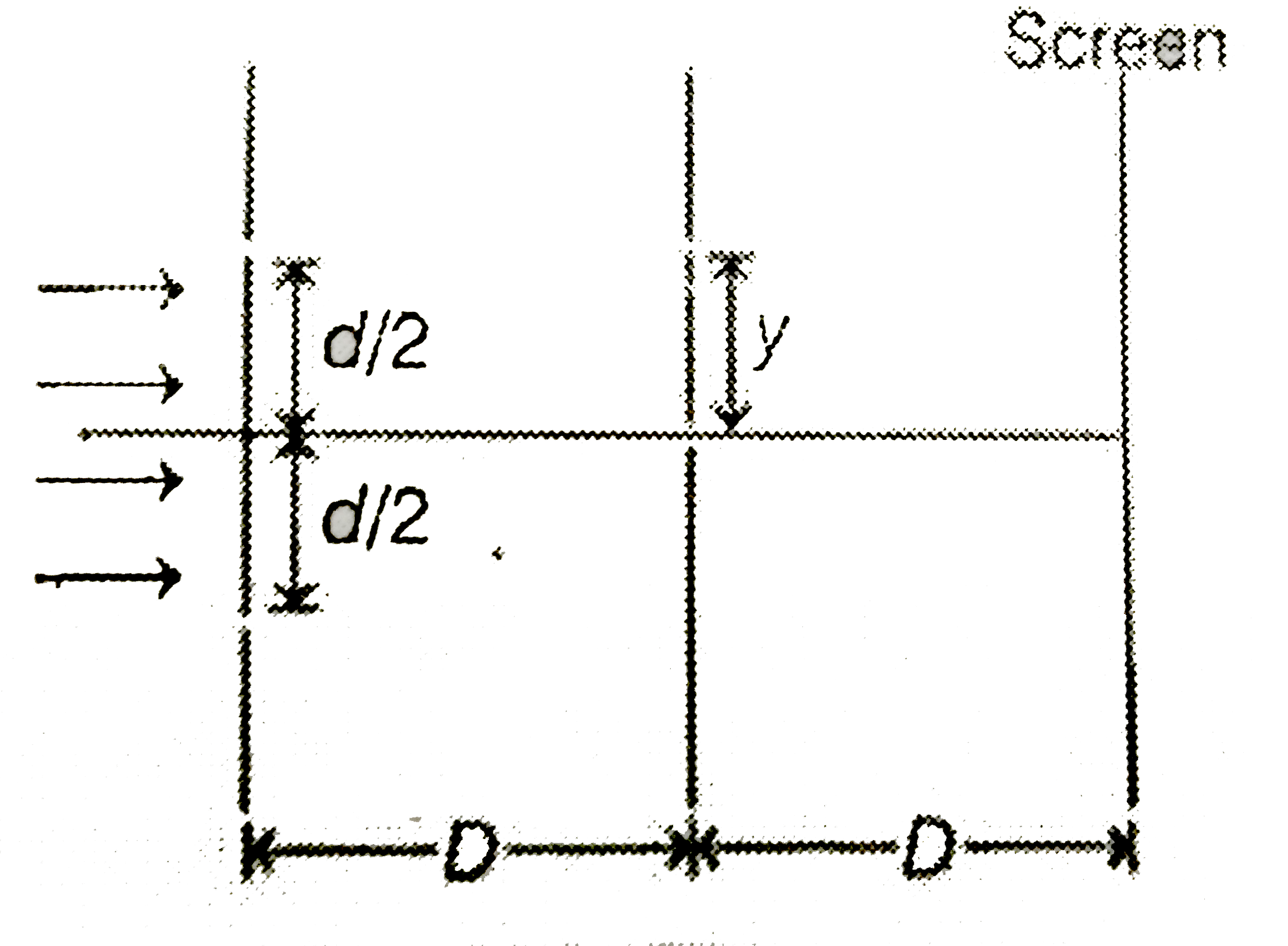A monochromatic beam of light falls on Young's double slit experiment apparatus as shown in figure. A thin sheet of glass is inserted in front of lower slit S2(λ=600nm is wavelength of source)

The phase difference between central masxima and 5th minima is
π6
9π
3π2
8π±π6
The correct Answer is:B
Phase difference δ=(2n−1)π=[2(5)−1]π=9π,ϕ=9π
Topper's Solved these Questions
- WAVE OPTICSBOOK - NARAYNACHAPTER - WAVE OPTICSEXERCISE - LEVEL - VI
40 Videos
- WAVE OPTICSBOOK - NARAYNACHAPTER - WAVE OPTICSEXERCISE - LEVEL - I(H.W)
20 Videos
- WAVE OPTICSBOOK - NARAYNACHAPTER - WAVE OPTICSEXERCISE - NCERT Based Questions
25 Videos
- SEMICONDUCTOR ELECTRONICSBOOK - NARAYNACHAPTER - SEMICONDUCTOR ELECTRONICSEXERCISE - ADDITIONAL EXERCISE (ASSERTION AND REASON TYPE QUESTIONS :)
19 Videos
Similar Questions
In the Young's double slit experiment apparatus shown in figure Δx is P the path difference between S2P and. S1P. Now a glass slab is introduced in front of S2 , then match the following


View SolutionIn the Young's double slit experiment apparatus shown in figure, the ratio of maximum to minimum intensity on the screen is 9. The wavelength of light used is λ, then the value of y is

View Solution
Knowledge Check
A monochromatic beam of light falls on Young's double slit experiment apparatus as shown in figure. A thin sheet of glass is inserted in front of lower slit S2(λ=600nm is wavelength of source)

If central bright fringe is obtained on screen at 'O' thenA(μ−1)t=dsinθB(μ−1)t=dcosθC(μt)=dθDt(μ−1)=dsinθA monochromatic beam of light fall on YDSE apparatus at some angle (say θ) as shown in figure. A thin sheet of glass is inserted in front of the lower slit s2. The central bright fringe (path difference =0) will be obtained
 Aat OBabove OCbelow ODanywhere depending on angle θ, thickenss of plate t, and refractive index of glass μ
Aat OBabove OCbelow ODanywhere depending on angle θ, thickenss of plate t, and refractive index of glass μYoung's double slit experiment is performed with monochromatic light. A thin film is introduced in front of one of the slits
AIntensity at the position of central maxima must decreaseBIntensity at the position of central maxima may increaseCCentral maxima may remain unshiftedDIntensity at position of first maxima may decreases
Using monochromatic light of wavelength λ in Young's double slit experiment, the eleventh dark fringe is obtained on the screen for a phase difference of _____.
View SolutionIn the Young's double slit experiment, maximum of bright bands observed (inclusive of the central bright band) is found to be 11. If λ is the wavelength of the monochromatic light used, the distance between the slits is
View SolutionIn young’s double slit experiment with a source of light of wavelength 6320Å, the first maxima will occur when
View SolutionIn Young's double slit experiment, the phase difference between the light waves reaching third bright fringe from the central fringe will be (λ=6000Å)
View SolutionIn Young's double slit experiment, the phase difference between the light waves reaching third bright fringe from the central fringe will be (λ=6000Å)
View Solution